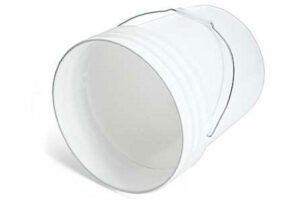We may be compensated if you purchase through links on our website. Our team is committed to delivering honest, objective, and independent reviews on home products and services.
Having a utility sink in the basement can be a helpful convenience for homeowners, making tasks such as laundry, cleaning, and gardening easier. Installing one might seem daunting to do on your own, but with the right tools and instructions, it’s a manageable do-it-yourself (DIY) project. Below, we walk you through the process of installing a basement utility sink, from planning to execution. This Old House plumbing and heating expert Richard Trethewey demonstrates the installation process, providing valuable insights and tips.
Planning Your Basement Utility Sink Installation
First, plan your project carefully. Assess your basement for the best location for your utility sink. Keep in mind:
- Proximity to existing plumbing lines
- Available floor space
- Accessibility for use and maintenance
- Potential obstructions such as support beams or ductwork
The closer your sink is to the existing plumbing lines, the easier the job will be.
Materials and Tools
To install a basement utility sink, you’ll need these items:
- Propane torch
- Bucket
- Copper pipes and fittings
- PVC pipe saw
- PVC pipes and fittings
- PVC primer and cement
- Pliers
- Screwdriver
- Solder and flux
- Shut-off valves
- Tubing cutter
- Utility sink and faucet
Preparing the Plumbing for the Utility Sink
Before installing the sink, you’ll need to prepare the plumbing connections. This involves modifying existing drain lines and water supply lines to accommodate your new sink.
Modifying the Drain Line
- Locate the existing drain line, typically near the washing machine standpipe.
- Use a PVC handsaw to cut into the drain line where you plan to connect the new sink.
- Clean and deburr the cut ends of the pipe with a pocketknife.
- Install a double-Y fitting to accommodate both the washing machine and the new sink drain.
In many basements, you’ll find that the drain line is situated conveniently near the washing machine. Cutting into this line and installing a double-Y fitting allows you to share the drain between the washing machine and the new utility sink, making the process more efficient.
Extending Water Supply Lines
To provide water to your new utility sink, you’ll need to extend the existing hot and cold water supply lines.
- Shut off the water supply to the area where you’re working.
- Cut into the hot and cold water supply lines using a tubing cutter.
- Install T-fittings to create branch lines for the new sink.
- Extend copper pipes from the T-fittings to the location of your new sink.
Extending the water supply lines ensures you have a reliable source of both hot and cold water at your utility sink. This can be particularly helpful for tasks that require temperature control, such as washing delicate items or cleaning tools.
Installing the Utility Sink
With the plumbing preparations complete, you can now install the sink itself.
Setting Up the Sink
- Assemble the faucet and attach it to the sink according to the manufacturer’s instructions.
- Install the drain assembly in the sink basin.
- Position the sink in its intended location, ensuring it’s level and stable.
Carefully following the manufacturer’s instructions for assembling the faucet and installing the drain assembly is important for preventing leaks and ensuring smooth operation. Positioning the sink properly is essential to maintaining its stability and ensuring effective drainage.
Connecting the Plumbing
- Attach flexible supply lines from the sink faucet to the newly extended water lines.
- Install shut-off valves on the hot and cold water lines for easy maintenance.
- Connect the sink’s drain to the PVC drain line you prepared earlier.
- Use PVC primer and cement to secure all drain connections.
Connecting the plumbing lines requires careful attention to detail to avoid leaks and other issues. Installing shut-off valves on the supply lines allows you to perform maintenance tasks easily without shutting off the main water supply.
Testing and Troubleshooting Your Utility Sink
After completing the installation, test your work and address any issues that may arise.
Checking for Leaks
- Turn on the water supply slowly and check all connections for leaks.
- Run water through the sink and observe the drain for any signs of leakage.
- If you spot any leaks, tighten connections or reapply solder or PVC cement as needed.
Ensuring Proper Drainage
- Fill the sink with water and then drain it, observing how quickly and smoothly it empties.
- Listen for any gurgling sounds, which may indicate a venting issue.
- If drainage is slow or noisy, check for proper slope in the drain line and ensure the vent is clear and functioning correctly.
Ensuring the drain line is sloped correctly and the vent is clear can help prevent issues with slow or noisy drainage.
Finishing Touches for the Utility Sink
Once you’ve confirmed that everything is working correctly, you can add some finishing touches to complete your basement utility sink installation.
You may want to install shelving or cabinets near your new sink to store cleaning supplies and other items. You might also want to add:
- A backsplash to protect the wall from water splashes
- A rubber mat to provide cushioning when standing at the sink
- A utility sink cover to create additional workspace when the sink isn’t in use
Tips for Maintaining Your New Utility Sink
To keep your new basement utility sink in top condition:
- Clean the sink regularly with mild soap and water.
- Avoid using harsh chemicals that could damage the sink material.
- Periodically check and tighten connections to prevent leaks.
- Clear the drain regularly to prevent clogs.







